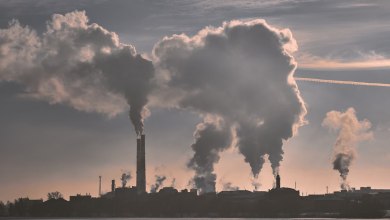Climate Change and Avalanche Risks on Nanga Parbat’s South Side

The south side of Nanga Parbat, which is located in the Himalayan Mountains, presents a difficult task to climbers, earning it the foreboding nickname “Killer Mountain.” The terrible reputation of this treacherous summit, however, has changed in recent years due to the effects of a fast-changing environment. According to a study published in 2021, the growing impact of climate change may cause avalanches on Nanga Parbat and elsewhere in the greater Himalayan region to become more deadly. This article explores the intricate connection between climate change and the rising avalanche dangers on Nanga Parbat’s southern flank.
The Climate Change Connection
The Himalayan range is experiencing its climate crisis as it warms at a rate twice as fast as the rest of the world. The snowpack on the south side of Nanga Parbat would suffer greatly as a result of this frightening temperature rise. According to the study cited previously, a major factor contributing to the increase in avalanche activity is temperature-driven snowpack instability.
Avalanches get denser and more deadly as temperatures rise because of the increase in snow density. As a result, victims buried beneath the snow may have difficulty breathing, which can cause asphyxia—a terrible result of avalanche threats brought on by climate change.
Aside from hypoxia, other evil factors have entered the mix as a result of climate change. The south side of Nanga Parbat is more prone to avalanches because of thinner snow cover and rougher terrain. These elements increase the risk for climbers and explorers trying to navigate this treacherous terrain by causing physical trauma and subsequent injuries.
The Attribution Challenge
Although the link between climate change and avalanches is becoming more and more clear, it is still difficult to attribute the rising number of avalanche fatalities to climate change alone. A hydrologist who worked on the 2021 study, Jakob Steiner, issued a warning against oversimplification.
The issue is complicated by a dearth of long-term observations, inadequate documentation, and a limited comprehension of the complex interactions between climate and avalanche triggers. Steiner and other specialists agree that several causes are at work.
Avalanche dangers brought on by climate change provide an additional threat to the south side of Nanga Parbat, which is already well known for its lethal difficulties. The complexity of the problem makes it difficult to determine the specific level of climate change’s influence, even though it is unquestionably a contributing component.
Also Read: Voluntary Carbon Markets Face Uncertainty as Big Names Retreat
The necessity of addressing climate change and its far-reaching effects in mountainous locations like the Himalayas becomes even more clear as academics work to study and comprehend these dynamics. Understanding these changing threats is crucial for anyone who ventures onto Nanga Parbat’s south slopes, highlighting the pressing need for readiness and safety precautions in the face of an unpredictable future.



